If you want your inflatable boat to perform at its best, you need to keep it inflated at the correct air pressure.
But as with many things in life, the answer isn’t simple.
Read this entire article to find out what the correct air pressure is for an inflatable boat, be it a dinghy, kayak, SUP or pontoon boat.
Contents
Recommended air pressure for the different parts of an inflatable boat
The table below contains the average recommended air pressure for inflatable boats and SUPs. Mind you, these are averages. Be sure to read the rest of the article as well.
| Recommended Pressure | |
|---|---|
| Main tubes | 1 – 3.5 PSI |
| Keel | 4 – 4.5 PSI |
| High pressure air floor | 6 – 11.5 PSI |
| SUPs | 15 PSI |
With that said, keep in mind that the recommended PSI for your dinghy, kayak or pontoon boat may vary slightly.
Read the instruction manual provided with your boat, or search google for the specifics of your inflatable.
When and how to adjust the air pressure of your boat
The air pumped turns into compressed air inside your boat’s tubes.
This compressed air is never at a constant PSI, it changes based on the:
- weather and air temperature
- sunlight
- and even water temperature
You may recall this from elementary science class:
- Cold decreases the PSI by decreasing the volume of the compressed air
- Heat increases the PSI by increasing the volume of the compressed air
Modern, quality inflatable water crafts are manufactured to be able to handle the effects of changing air pressure without noticeable effects. For now.
But over time, the lifespan of your boat might be affected.
Knowing when to adjust your air pressure is vital to keeping your inflatable boat at top performance. You will need to top off the air, or let some out as needed.
The effect of air temperature
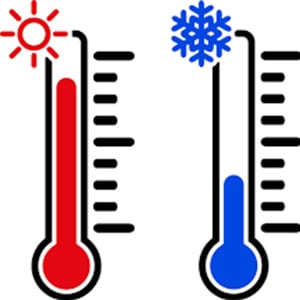
The weather can change slowly over the course of the day, or dramatically over a shorter period.
Here are some tips on when to adjust the pressure in your tubes based on changes in weather:
- If you pump up your boat in the morning hours when the temperature is still cooler, you should account for the rising daytime temperatures. You can do one of 2 things to compensate. Either pump the boat to the lower range of the recommended PSI band and let the warmer temperature increase the PSI of your boat. Or my preferred method, let a bit of air out of our tubes as needed during the day.
- Vice versa, if you were at full PSI during the hottest hours of the day and the temperature starts cooling down in the afternoon, your boat’s air pressure might fall and you might need to top it off.
I always have a K-Pump Mini with me for this.
The effect of sunlight

The most dramatic change in the pressure of the compressed air in your inflatable watercraft will be as a result of direct sunlight.
- Direct sunlight can quickly heat up the air inside your tubes, causing over-inflation. You will need to let some air out if this happens.
- Vice versa, if it becomes cloudy after a day of sunshine, your air pressure will drop and you might need to top it off.
As I mentioned, strong sunlight can increase the air pressure in your chambers very quickly.
Be aware of this phenomenon, as it can quickly lead to over-inflation.
The effect of water temperature
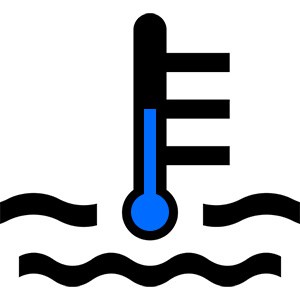
Many people wonder why the pressure of their correctly inflated boat drops all a sudden, as they put the boat onto the water.
It is probably because the water is much colder than the air.
The cold water will lower the temperature of the compressed air inside your chambers, thus causing the PSI to drop.
It would be best if you always had a reliable hand pump in your boat to be able to top off the pressure as needed.
What happens if your boat’s PSI drops?
If the air pressure inside your inflatable boat’s chambers drops, you will feel like your boat is very hard to propel.
It feels sluggish when you paddle an inflatable kayak or dinghy with low air pressure, everything becomes harder.
On boats that are otherwise capable of planing on the water, planing might not be possible any longer.
Is a drop in air pressure dangerous?
It depends on the circumstances.
If you are out floating in your dinghy on a lake, than no. Your boat will become sluggish, but that in itself is not dangerous.
However, if you are in a whitewater raft or a kayak, not being able to propel and steer the boat efficiently might become dangerous.
What happens if your boat’s PSI increases?
As the air pressure in your boat’s tubes increases, the compressed air expands.
This will lead to over-inflation, which is a phenomenon that occurs when the actual air pressure in the tube is above the recommended air pressure.
What happens when you over-inflate a rubber balloon?
POP!
Just kidding 🙂
I’ve never seen an inflatable boat pop due to over-inflation alone, but I have seen what over-inflation can lead to.
Read on to find out.
Is an increase in air pressure dangerous?
Yes, it can be, depending on the circumstances.
Firstly, over-inflation can put extra stress on the seams of your boat, shortening its life span. You do not want your seams to ever fail, especially not when you’re out on the water.
Secondly, an over-inflated kayak or white water raft is prone to puncture when hitting a sharp rock in the water. Such a blow-out puncture will lead to the quick deflation of the given air chamber.
On a lighter note, check out how these guys over-inflate their boat:
What does a correctly inflated boat look and feel like?
When a tube is properly inflated, it is hard and has a bloated feel to it.
You can use what is known as the thumb deflection test to gauge the operating pressure as well.
Here is how:
- Place your thumb on the top center of the tube, and press down using just your thumb.
- It should depress about 1/2″ (1.2 cm).
- If you can’t press down that far, your boat may be over-inflated.
- Vice versa, if you can press down way further, your air pressure is still low.
Air pumps with pressure gauges
The foot pumps inflatable boats come with are very basic.
If you want to avoid overinflation/underinflation and know exactly how much pressure is in your tubes when pumping, you should get a pump with a pressure gauge.
Here are the ones I use, click for my reviews of each.
Electric pump
OutdoorMaster Shark II >>
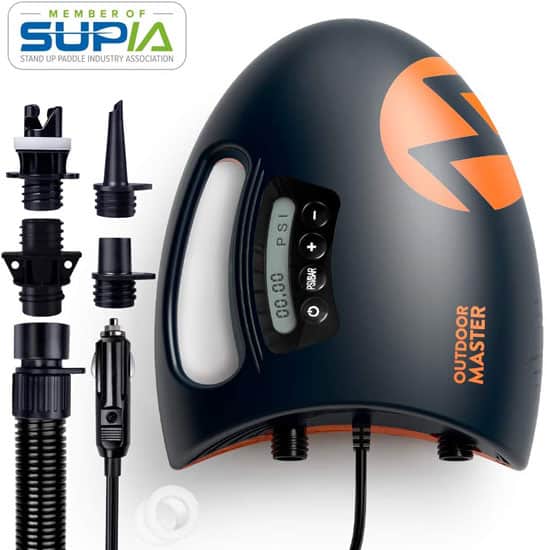
Manual pump
NRS Super Pump 2 >>
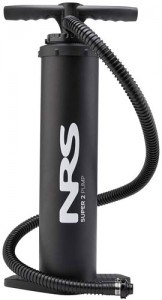

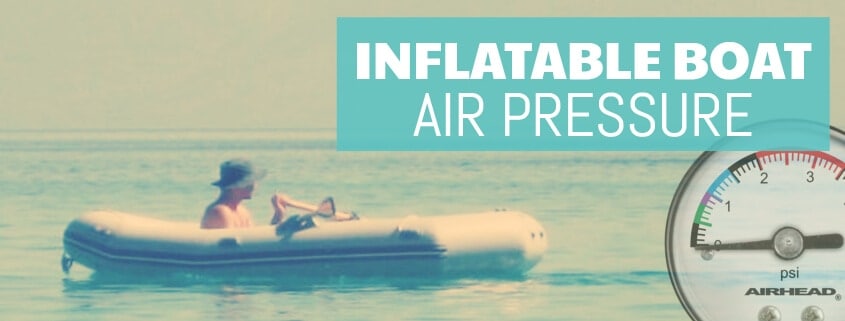
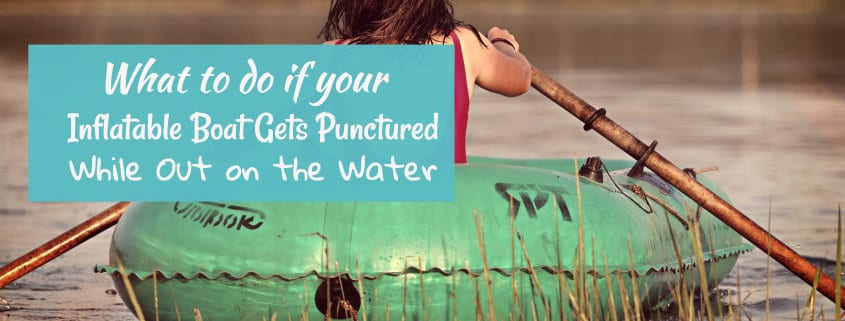
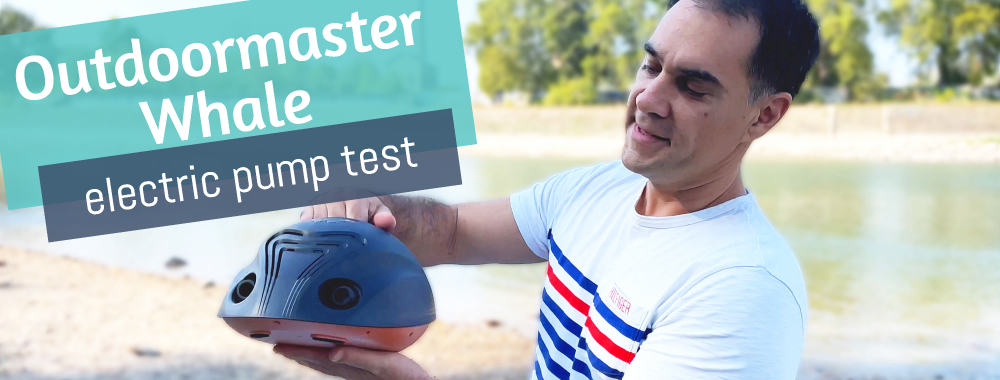

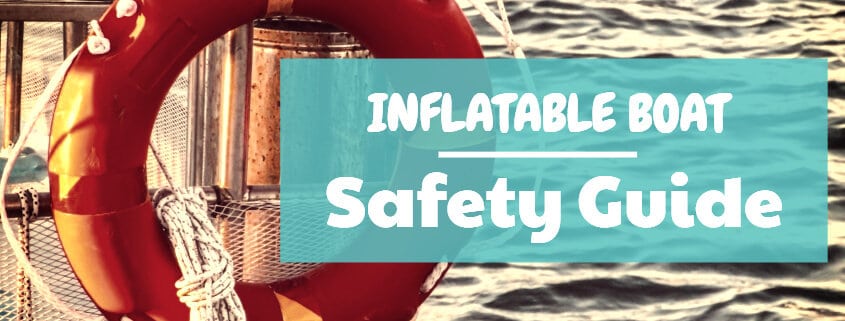
I have several Inflatables. One is a dingy the other is a rib (16ft). I’ve read that for winter storage you should leave the tubes at their recomended PSI. That works for me with the rib, so I cover it and leave it on the trailer. Spring time the tubes are almost deflated. (New Tubes last year). Is this the best way to store?
The Dingy (9ft) would be easyer if I folded and stored in a dry location. How much damage would this do?
One more question. Do these UV spray protection work? Thanks for the help
Yes, the UV protectants definitely work, but you still shouldn’t store them out in the sun without covering.
It’s best to keep the RIB inflated during winter. The drop in temperature will reduce tube pressure, but don’t worry, just top it off during spring. Just make sure to cover it well and winterize your systems.
You can deflate the dinghy and store it folded. Just fold it properly, and store it in a dry place.
I have a FoldCat 375fc. The recommended psi is 3.5, but when I inflate it, my air compressor shows 3.5 psi before it even looks halfway full. After reading about over/under inflation and the effects of sun/weather I can definitely understand how it could be dangerous to inflate too much, but even with the thumb test, its still at about 5-6 psi. I’ve used both a battery pack car inflator with a gauge, and also a Ryobi 18V cordless air compressor with the digital gauge, both say the same thing. In addition to that, everyone says it should take 15-20 minutes to inflate… my boat takes about 40-45 minutes… is this normal? Any help or advise would be GREATLY appreciated.
Hi Mark, this is strange. Does this happen on both pontoons? I’m thinking it might be the valve, but odds are it won’t happen on both valves at the same time.
Or it could be that your air compressors aren’t showing the correct pressure. To test this, I would use the foot pump that came with the boat to inflate it as per the instructions, and when it is fully inflated, plug the electric pump hose into the valve to see the PSI reading. If you inflated it fully with the foot pump, but the air compressor shows something completely different, you’ll have the culprit.
I just bought a 12 ft Saturn inflatable with a Suzuki 20 horse outboard and am looking for advice. The motor was brand new and I put the required 10 hours break in time but when I took it up to half throttle it started cavitating. One of my questions is if the keel is underinflated, would that make the motor cavitate trying to get it up on plane? My prop is a 9.25 x 10 and some people suggested that I need a bigger prop, possibly up to an 11 or 12 to disperse the water faster to bring it up on plane. Thoughts on this?
I don’t think this has anything to do with the boat. It’s probably your propeller. You should have it looked at by a professional. Just because the motor is new, doesn’t mean it’s perfect.